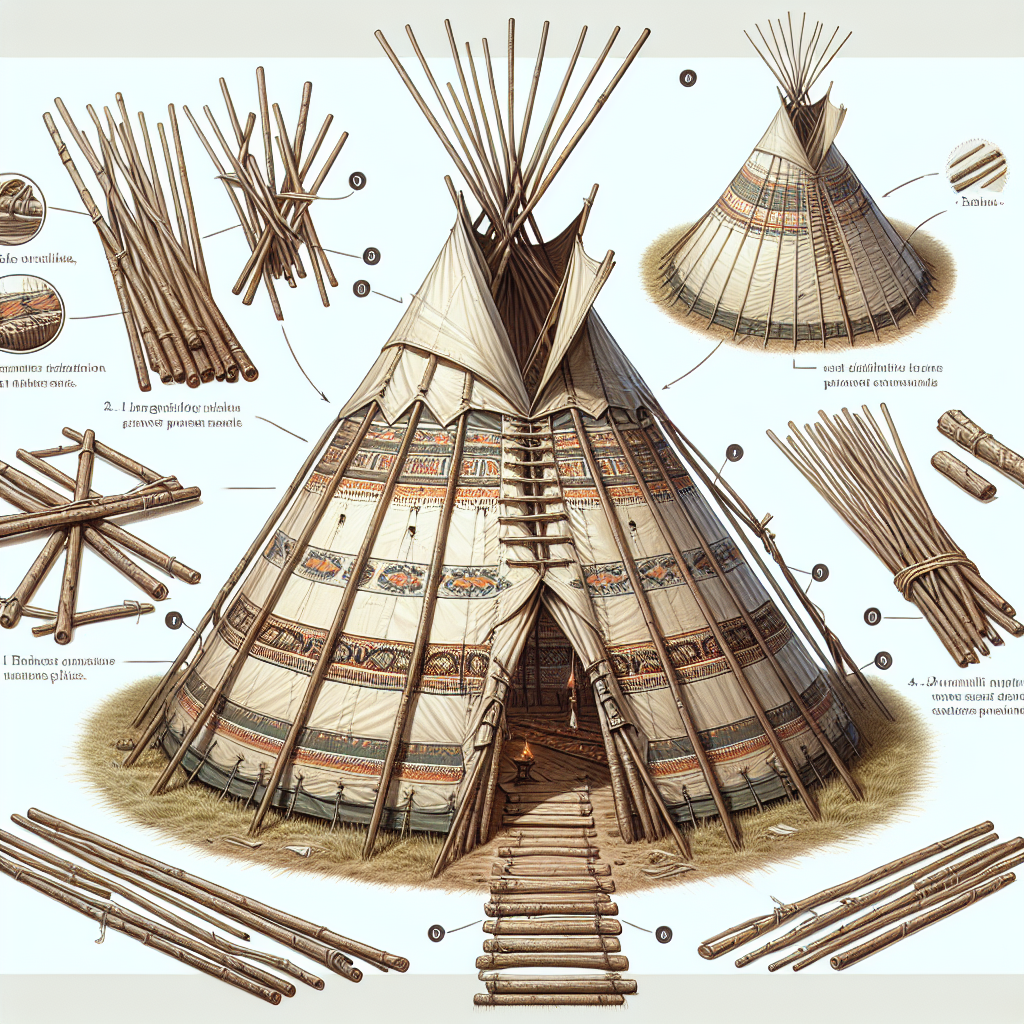
How to build a teepee
Introduction to Teepees
Teepees, traditionally used by Indigenous peoples of the Great Plains, are fascinating structures that have attracted the interest of many. Their conical shape isn't merely aesthetic — it's designed for efficiency and sustainability, making them ideal for various purposes. Whether you're seeking a unique outdoor structure, a cozy camping site, or a new crafting project, learning how to build a teepee can be a rewarding experience.
The History of Teepees
Teepees have a rich history that dates back centuries. Originally designed for nomadic lifestyles, these dwellings were built to be easily assembled and disassembled, allowing for mobility while maintaining comfort. Traditional teepees were made from animal skins and wooden poles, but contemporary versions can utilize a range of materials.
Understanding the historical significance and traditional construction methods can give you a deeper appreciation for the teepee and inform your own building process.
Materials Needed
Before diving into your teepee construction project, it's essential to gather the right materials. Here’s a comprehensive list:
- Wooden poles (6-12 sturdy poles, usually around 8-12 feet long)
- Tarps or canvas (for the covering)
- Rope or strong cord (for securing poles)
- Ground stakes (for securing the base)
- Optional: insulation materials (for colder climates)
Steps to Building a Teepee
When it comes to constructing a teepee, following a step-by-step process can simplify the task. Here’s how to build a teepee:
Step 1: Choose a Location
Select a flat, open area, preferably with a natural windbreak like trees. Ensure it's free from rocks and debris and has access to water if you plan to camp.
Step 2: Prepare Your Materials
Gather your wooden poles and lay them out in your chosen location. This will allow you to visualize how many poles you’ll need to use and how the structure will take shape.
Step 3: Set Up the Poles
- Take three poles to form a tripod. Secure them together at the top using rope.
- Spread the lower ends of the poles out to create a stable base.
- Gradually add additional poles around the tripod to form the rest of the teepee, spacing them evenly.
- Secure each pole in place using ropes tied to the ground stakes.
Step 4: Attach the Covering
Once your pole structure is secure, it's time to add the covering. You can use tarp or canvas, depending on your preference.
- Start at the back of the teepee. Drape the covering over the poles and secure it at the ground level using stakes.
- Wrap the covering around, overlapping the seams to protect against rain.
- Leave an opening at the top for smoke ventilation if you plan on using a fire inside.
Step 5: Insulate (Optional)
If you’re building your teepee in a colder climate, consider adding insulation. You can use packing blankets or straw bales around the interior walls for added warmth.
Step 6: Final Touches
Finally, check that everything is secure. You may want to add an entrance flap or additional decorations, such as paintings or beads, to personalize your teepee.
Tips for Building a Teepee
Before you begin construction, consider these additional tips:
- Work with a partner; having another set of hands can make the process easier.
- Research traditional designs for inspiration.
- Practice safety — ensure all tools are used correctly and be careful with sharp objects.
- Follow local laws and regulations, especially if you're setting it up in a public space.
Uses for Your Teepee
After learning how to build a teepee, you'll discover there are numerous ways to utilize it:
- Camping: Provides shelter from the elements while enjoying the outdoors.
- Backyard Playhouse: A fun play area for kids.
- Art Studio: A creative space away from distractions.
- Outdoor Gathering: Perfect for hosting gatherings, storytelling, or meditation.
Maintaining Your Teepee
Once your teepee is built, proper maintenance will extend its life. Here are some tips:
- Clean the covering regularly to prevent mold and mildew.
- Check the stability of the poles and stakes periodically, especially after strong winds or storms.
- Store materials indoors during harsh weather to prevent damage.
Conclusion
Building a teepee is not only a fun project, but it also offers a unique connection to both history and nature. By following these steps, you'll not only learn how to build a teepee, but you'll also create a personal space that can serve various functions — from relaxation to creativity. Embrace the opportunity to create and enjoy this magnificent structure, letting your imagination run wild as you personalize your space.
“A teepee is not just a shelter; it’s a home, a symbol of culture and community, an embodiment of creativity.”
By Guest, Published on August 24th, 2024